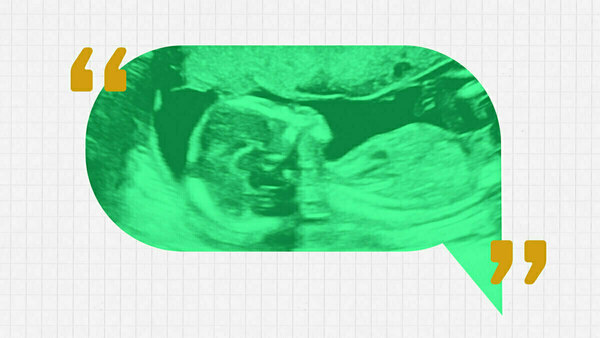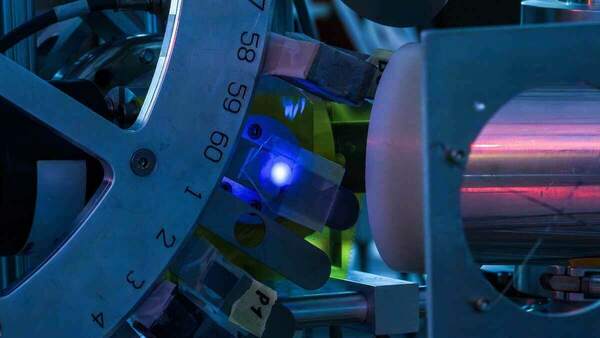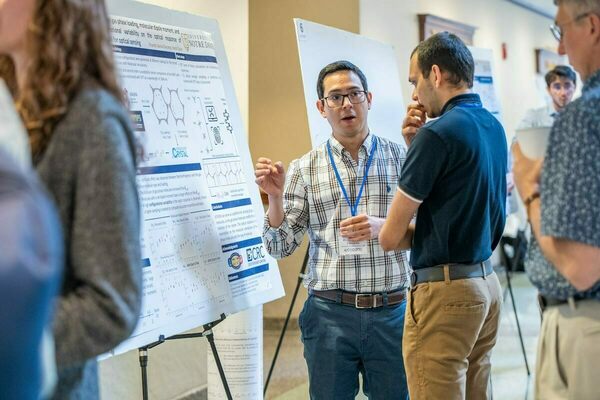First impressions count: How babies are talked about during ultrasounds impacts parent perceptions, caregiving relationship

Most parents can think back to the first ultrasound image they saw of their unborn child, and may even be able to remember what impression that image had on them. Would their child be an active toddler, a tad bit ornery or stubborn, sweet and cuddly, fiercely independent, or shy and cooperative? New research suggests these initial perceptions may have been formed, at least in part, in response to how the health care provider described the baby during the exam.
These prenatal care experiences play a large role in shaping how parents see their babies and, consequently, affect how parents relate to their children later on and how those children behave in return, according to new research from the University of Notre Dame.
“The ultrasound experience is such a salient, emotional part of the pregnancy overall, legitimizing the pregnancy itself and creating an opportunity for brand-new memories with the baby,” said Kaylin Hill, assistant professor in Notre Dame’s Department of Psychology and lead author of the study published in Communications Psychology, a Nature journal.
“The words used in these conversations with ultrasound technicians or obstetric sonographers — whom we consider experts on fetal development — get absorbed and influence who you think your child is before they’re even born,” Hill said. “Our research suggests the descriptions offered by prenatal care providers stick with parents. When we asked prospective parents to describe their baby, 70 percent of them indicated their perception was related to a prenatal care visit.”
The statements made by health care providers to expecting parents about their baby may have unintended consequences and “may play a role in influencing a child’s future,” the researchers wrote.
Prior research has found that if a parent views a child positively during pregnancy, the parent is more likely to engage in more positive parenting behaviors after the baby is born. For example, babies described with more positive words experience higher levels of sensitivity, warmth and engagement from parents. Those described with more negative words receive less.
Hill said her study is the first to show “these first impressions prospectively relate to childhood behavior as well, and not only parenting practices.”
The study, broken into two segments, first observed 320 pregnant mothers between 11 and 38 weeks’ gestation who provided a description of their babies, followed by a report on their children's behavioral and emotional difficulties at 18 months old. Those parents who described their unborn children more positively observed that their child had fewer difficulties as a toddler. However, negative descriptions were associated with greater difficulties in the child’s behavior and in regulating their emotions.
Problem behaviors in the children included being emotionally reactive, experiencing anxiety or depression, having trouble paying attention, acting withdrawn, having trouble sleeping, acting aggressively and even complaining of various physical symptoms.

The researchers learned that descriptor words specifically attributed to the ultrasound experience tended to have a more negative emotional tone than those related to any other experience — such as talking about your baby with your spouse, family and friends, or comparing family characteristics between your baby and certain relatives.
“These interactions between prospective parents and prenatal care providers seem small,” Hill said. “Can single words really impact how parents perceive their unborn child to be?”
While this first segment of the study demonstrated differences in the tone of words attributable to prenatal care visits versus other sources, the second segment tested the researchers’ hypothesis that negative comments made during ultrasound exams actually lead to more negative parental perceptions.
They asked 161 participants to report on the personality of a baby following an imagined prenatal care visit in which they were randomly assigned to different exam conditions. In each instance, the ultrasound technician indicated that they were unable to capture the necessary images, but with three different explanations as to why. Some participants were told it was the baby’s fault for not cooperating during the ultrasound, others learned that technical issues caused the disruption, and the last group were simply told that they would get another chance to see their baby at a subsequent appointment.
Participants who were told that they would get to return for a follow-up appointment were much more likely to use positive words to describe the baby than participants in the other two conditions. Those who were told the failed image captures were because the baby was uncooperative used more negative words to describe the baby than participants in the other two conditions.
“These interactions between prospective parents and prenatal care providers seem small. Can single words really impact how parents perceive their unborn child to be?”
Evaluating the language used by health care professionals during these prenatal encounters is crucial in fostering positive parent-child relationships, according to the study’s findings, as well as educating medical and mental health professionals about the importance of prenatal and early childhood experiences. Equally critical is providing more support for both parents and children during the perinatal period (the time from pregnancy through the first year after childbirth).
“Of course we want to help support parents,” Hill said, “and this research suggests a first step may be to talk with health care providers, to highlight the importance of these seemingly small differences in word choice during salient moments with pregnant patients.”
Hill is an affiliate of Notre Dame’s Veldman Family Psychology Clinic and the director of the Psychophysiology of Affect across the Lifespan (PAL) Lab, which focuses on familial dynamics and mental health. She sees this study as one small, yet key, component of the whole picture of what makes for a healthy family. “Depression affects the entire family, and not just one person,” Hill said.
“One of the highest risk periods for depression is the perinatal period, where individuals are experiencing changes across so many levels of functioning — physical, psychological and social,” she said. “If an ultrasound experience is impacting how an individual sees their child, that could potentially influence aspects of the caregiving relationship, which is really important for both parent and child outcomes over time.”
Hill conducted the research in conjunction with Abigail Blum, Regan Carell and Kathryn Humphreys, all of Vanderbilt University, with funding provided in part by the National Institute of Mental Health and the National Science Foundation CAREER Award, among others.
Contact: Tracy DeStazio, associate director of media relations, 574-631-9958 or tdestazi@nd.edu
Originally published by at news.nd.edu on July 22, 2025.
Latest Research
- Researchers at Notre Dame detect ‘forever chemicals’ in reusable feminine hygiene productsWhen a reporter with the Sierra Club magazine asked Graham Peaslee, a physicist at the University of Notre Dame, to test several different samples of unused menstrual underwear for per- and polyfluoroalkyl substances (PFAS) in 2019, the results fueled concern over chemical exposure in feminine hygiene products — which ultimately ended up in a $5 million lawsuit against the period and incontinence underwear brand Thinx. Then in 2023, the New York Times asked Peaslee to test 44 additional period and incontinence products for PFAS, a class of toxic fluorinated compounds inherently repellent to oil, water, soil and stains, and known as “forever chemicals” for their exceptionally strong chemical and thermal stability. Measurable PFAS were found in some layers of many of the products tested — some low enough to suggest the chemicals may have transferred off packaging materials, while others contained higher concentrations, suggesting the chemicals were intentionally used during the manufacturing process. In the meantime, another group of researchers published a study that found PFAS in single-use period products, leading Peaslee and his lab to widen their investigation into all sorts of reusable feminine hygiene products — often viewed as an eco-friendly option by consumers. Now, the results of that study have been published in Environmental Science & Technology Letters.
- Notre Dame hosts major international artificial intelligence and machine learning conferenceExperts from 22 different institutions of education and research located in 7 different countries gathered at the University of Notre Dame (South Bend, Indiana, USA) last week for a flagship workshop of the Centre Européen de Calcul Atomique et Moléculaire (CECAM).…
- University of Notre Dame and IBM Research build tools for AI governanceMain Building (Photo by Matt Cashore/University of Notre Dame) …
- Smarter tools for policymakers: Notre Dame researchers target urban carbon emissions, building by buildingCarbon emissions continue to increase at record levels, fueling climate instability and worsening air quality conditions for billions in cities worldwide. Yet despite global commitments to carbon neutrality, urban policymakers still struggle to implement effective mitigation strategies at the city scale. Now, researchers at Notre Dame’s School of Architecture, the College of Engineering and the Lucy Family Institute for Data & Society are working to reduce carbon emissions through advanced simulations and a novel artificial intelligence-driven tool, EcoSphere.
- Seven engineering faculty named collegiate professorsSeven faculty members in the Notre Dame College of Engineering have been named collegiate professors—a prestigious title awarded by the university and college in recognition of excellence in research, teaching and service. The designation may be conferred on faculty at the assistant, associate or…
- ‘A special challenge’: German studies scholar wins National Humanities Center fellowship for research on medieval womenFor CJ Jones, the joy of research is not the answers but the journey. And the next step on that journey is a fellowship with the National Humanities Center. …













